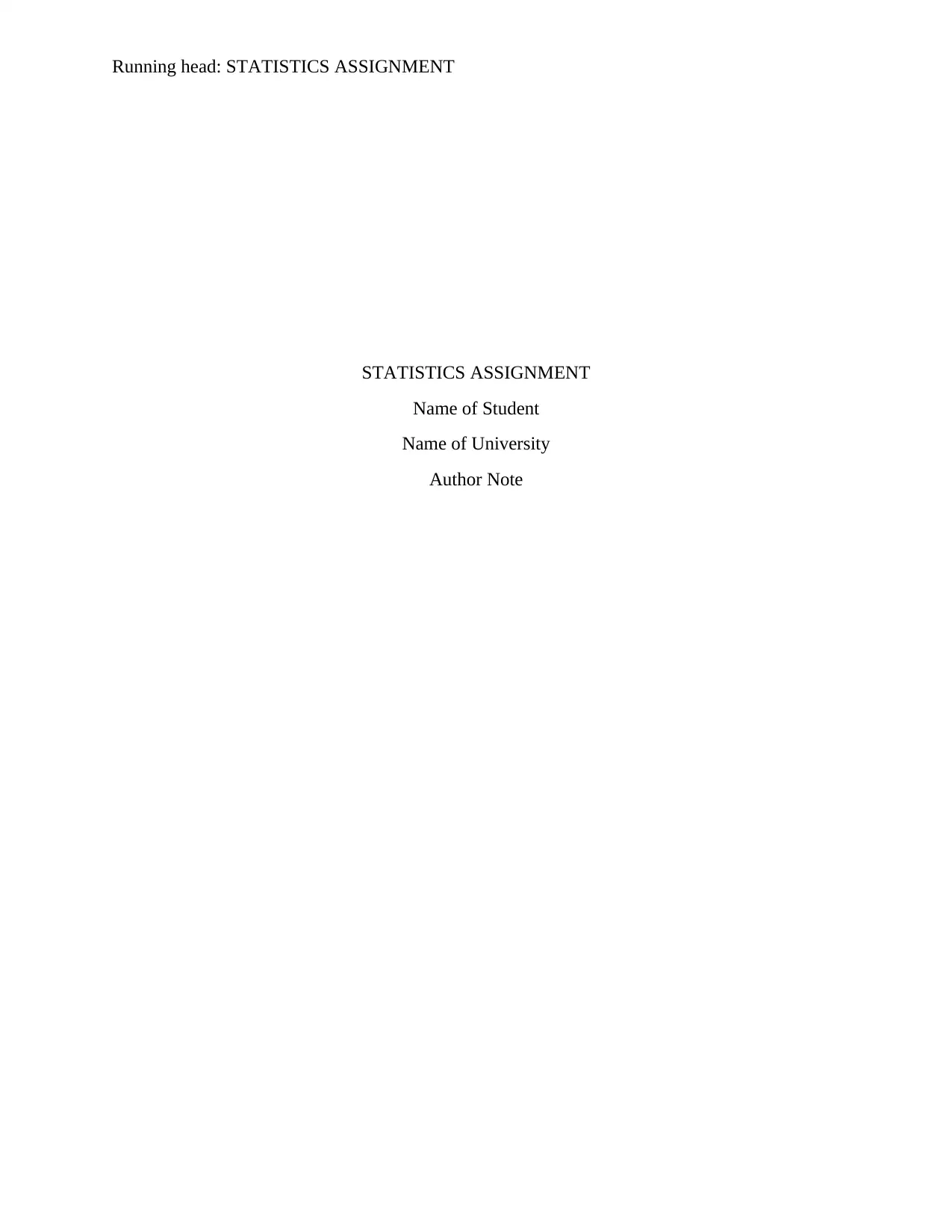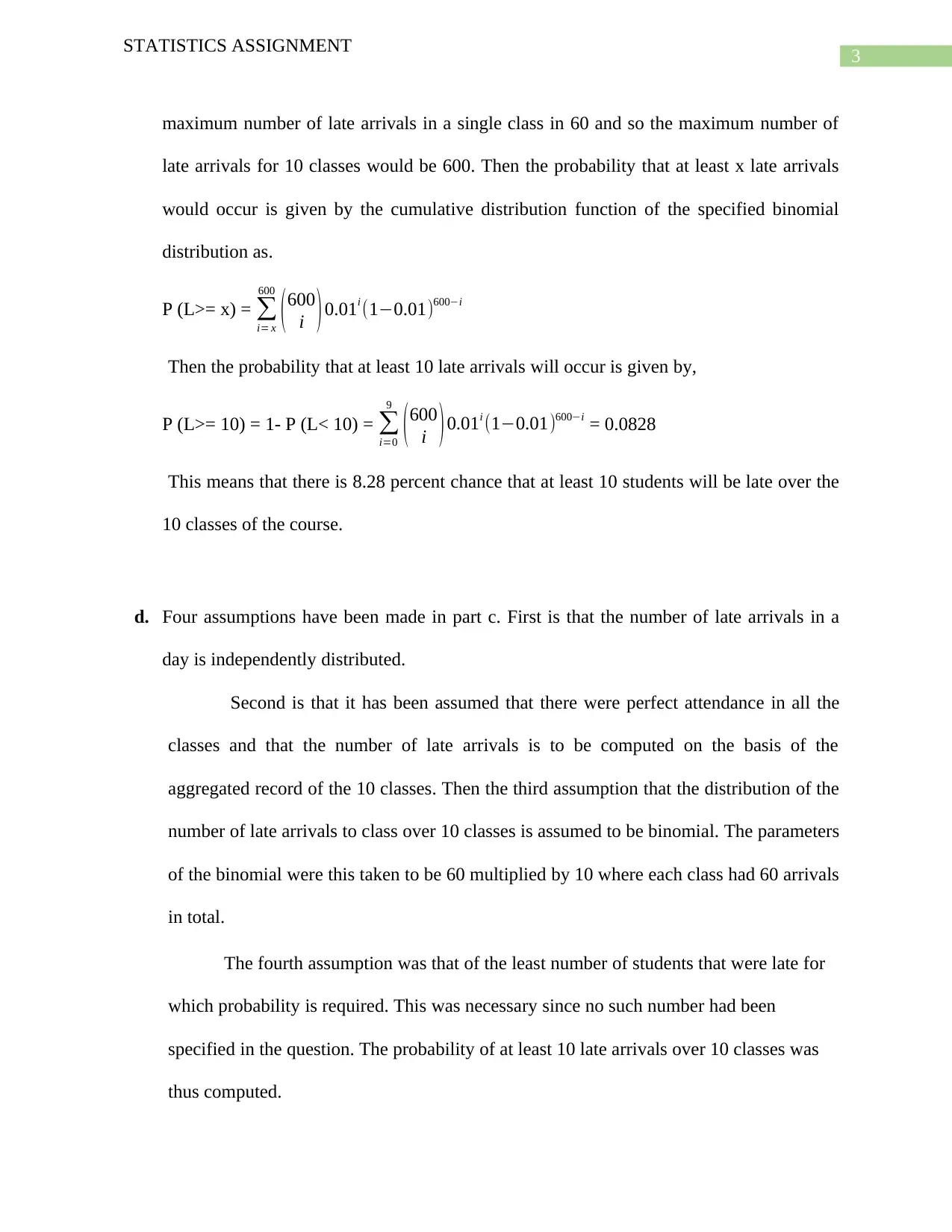Statistics Homework: Probability Analysis of Student Arrival Times
VerifiedAdded on 2023/06/07
|5
|942
|80
Homework Assignment
AI Summary
This statistics assignment delves into the analysis of student arrival times using probability distributions. It begins by modeling a student's arrival time as a normal distribution, calculating the probability of a student being late given a target arrival time. The assignment then determines the target arrival time needed to achieve a specific lateness probability. Furthermore, it explores the probability of a certain number of late arrivals occurring over multiple classes, assuming a binomial distribution. Finally, the assignment critically evaluates the assumptions made in the binomial distribution model, particularly focusing on the independence of late arrivals and highlighting the potential influence of individual behavior on attendance patterns. Desklib provides access to similar solved assignments and study resources for students.
1 out of 5












![[object Object]](/_next/static/media/star-bottom.7253800d.svg)